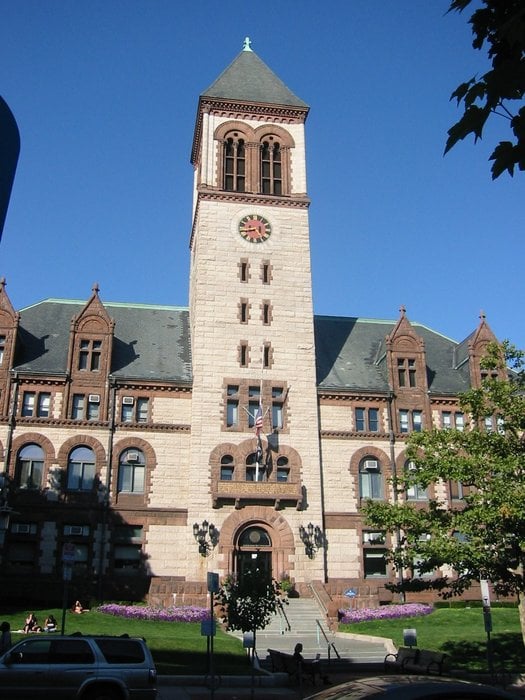The following is the text and a downloadable pdf of a pamphlet illustrating basic Marxist concepts. It’s provided by Boston PEWG for anyone use, copy, or distribute. Download it Here (PDF).
Who was Marx?
Karl Marx was born in 1818 in the city of Trier in what was then the Kingdom of Prussia. He studied law and philosophy as a young adult, but spent most of his life engaged in revolutionary activity. He moved all over Europe, living in France, Belgium, and what is now Germany before finally settling in London. He was frequently harassed and stalked by reactionary governments and often lived under an assumed name.
With his lifelong collaborator Frederick Engels, he helped organize first the League of Communists, for whom they published The Communist Manifesto, and later the International Workingman’s Association, also known as the First International. Marx also wrote for the New York Tribune and was influential on the early development of the Social Democratic Party of Germany.
Towards the end of his life Marx turned his attention towards a more organized study of political economy, attempting to understand the exact nature of the capitalist system. This study produced his most influential work, Capital. He died in London in 1883.
Labor and Capitalism
Along with contemporary political economists like Adam Smith and David Ricardo, Marx understood human labor as the basis for the value of commodities.
Capitalism is a system of production characterized by the pervasive production of commodities for exchange. Commodities are goods produced for exchange rather than other requirements like feudal tithes.
This system allows for the exploitation of surplus value, paying workers less for their labor than the value of the labor in the goods they produce, by the capitalist (or bourgeois) class by driving all production into commodity production. Capitalists seek to commodify new markets, often through state or state-sanctioned violence, via colonization and the displacement of traditional modes of production. Deprived of other means to sustain themselves, people must sell their labor to capitalists and be alienated from the product of labor.
Capitalism is, at its root, a system of the application of violence to ensure the product of human labor benefits a particular class of people rather than humanity as a whole.
Historical Materialism
Marx arrived at these conclusions about the nature of labor and capital’s relationship through the application of a philosophy his collaborator Frederick Engels would later term historical materialism. Marx saw people’s participation in processes of production as the fundamental factor in their lives. As people have always worked in conjunction with others, these processes of production are social processes. From the relationships formed in these social processes come human politics, arts, and culture. These, in turn, influence how people organize themselves to produce.
This relationship is often referred to as the base and superstructure, where the base is the mode (or process) of social production people are organized around and the superstructure is the political organization and ideology of society.
Marx also understood that human society and modes of production are in constant flux. He believed change was driven by the struggle between classes of people as contradictions in the mode of production developed. He saw the end of the feudal period in Europe as an example of this. As wealth poured in from the exploitation of indigenous peoples and African slaves in the Americas, it lead to the creation of a new class, the capitalist class, from merchants, guild leaders, and parts of the old aristocracy who were engaged in commodity trade and production. This capitalist class reshaped the laws and customs of the continent, replacing the old idea of property based on title and lineage with a new one based on purchase and ownership.
While witnessing the industrial revolution sweeping through Europe, Marx saw a similar change happening. Previously isolated peasant farmers were being forced off the land and into factories that grew increasingly larger each year. A new system of socialized production was emerging where a new class, the working class, cooperated together to produce society’s material needs on a previously unheard-of scale.
The contradiction between this socialized production and the private ownership of the factories, which allowed the capitalists to extract surplus value from workers, is now the driver of change in society. The people engaged in socialized labor, the working class, are now the subjects of history and, by acting as a class, have the ability to abolish private ownership and end the use of their labor for purely private gain.
Organizing for Action
A tenet of historical materialism is that our social practice can drive the course of history. Marx believed that the contradictions of capitalist production would push workers to organize together, but also that that self-organization would not necessarily be enough to abolish the existing system.
Socialists have to position themselves on the leading edge of the worker’s movement to promote class consciousness among working people. In order to abolish capitalism, we have to work together as a class acting for the interests of the working class and those interests alone. Socialists have a duty to make sure their practice includes the entirety of the working class regardless of race, gender, ability, or nation.
As Marx and Engels ended the Manifesto:
“Workers of the world unite! We have nothing to lose but our chains!’
Further Reading
Karl Marx and Friedrich Engels, The Communist Manifesto.
Frederick Engels, Socialism, Utopian and Scientific.




Leave a Reply